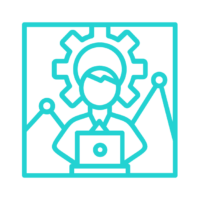ID-Entrepreneurship – HRID | Entrepreneurship Test
ID-Entrepreneurship
The ID-Entrepreneurship (Ent) is designed to assess the key characteristics of potential entrepreneurs that distinguish themselves by their success in business. The test covers all the important aspects of entrepreneurship, i.e. the conditions for success, the ability to take risks, the motivation, and interest in becoming an entrepreneur, the personal characteristics that are necessary to carry out such a project and the concrete intention to start a business.







